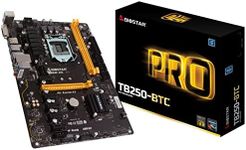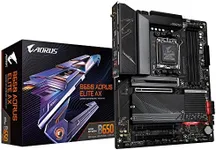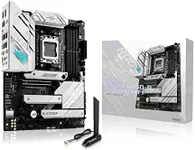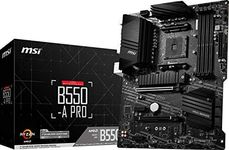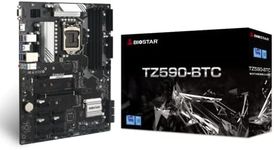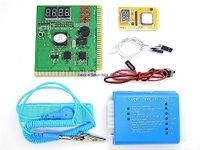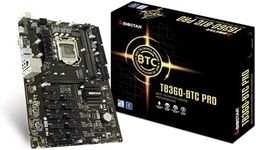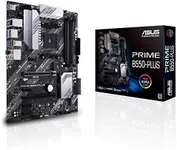Buying Guide for the Best Motherboard For Pc
Choosing the right motherboard for your PC is crucial as it serves as the backbone of your computer, connecting all the components together. The motherboard determines the compatibility and performance of your system, so it's important to consider your needs and future upgrade plans when making a decision. Here are some key specifications to look at when selecting a motherboard.Form FactorThe form factor of a motherboard refers to its size and shape, which determines the type of case it will fit into. Common form factors include ATX, Micro-ATX, and Mini-ITX. ATX is the most common and offers the most features and expansion slots, making it suitable for most users. Micro-ATX is smaller and has fewer expansion slots, ideal for compact builds. Mini-ITX is the smallest and is perfect for very compact or portable systems. Choose a form factor based on the size of your case and your need for expansion.
Socket TypeThe socket type of a motherboard must match the CPU you plan to use. Common socket types include Intel's LGA and AMD's AM4. The socket type determines which processors are compatible with the motherboard. Ensure that the motherboard's socket type matches the CPU you intend to use, and consider future upgrades to ensure compatibility with newer processors.
ChipsetThe chipset on a motherboard controls communication between the CPU, RAM, and other components. Different chipsets offer varying features and performance levels. High-end chipsets provide better performance and more features, such as overclocking support and additional USB ports. Mid-range chipsets offer a balance of performance and features, while budget chipsets provide basic functionality. Choose a chipset based on your performance needs and desired features.
RAM SlotsRAM slots determine how much memory you can install on your motherboard. Most motherboards have two or four RAM slots. More slots allow for more memory, which can improve performance in memory-intensive applications. If you plan to use your PC for gaming, video editing, or other demanding tasks, opt for a motherboard with four RAM slots to allow for future memory upgrades.
Expansion SlotsExpansion slots, such as PCIe slots, allow you to add additional components like graphics cards, sound cards, and network cards. The number and type of expansion slots vary between motherboards. If you plan to use multiple graphics cards or other expansion cards, choose a motherboard with sufficient PCIe slots. For general use, a motherboard with one or two PCIe slots should be sufficient.
Storage OptionsMotherboards offer various storage options, including SATA ports for traditional hard drives and SSDs, and M.2 slots for faster NVMe SSDs. The number of storage options can affect your ability to expand storage in the future. If you need a lot of storage or plan to use fast NVMe SSDs, choose a motherboard with multiple SATA ports and M.2 slots.
ConnectivityConnectivity options on a motherboard include USB ports, Ethernet ports, and Wi-Fi support. More USB ports allow you to connect more peripherals, while Ethernet and Wi-Fi support ensure reliable internet connectivity. Consider your connectivity needs, such as the number of USB devices you use and whether you need Wi-Fi, when choosing a motherboard.
AudioMotherboards come with built-in audio solutions, but the quality can vary. Higher-end motherboards offer better audio components for improved sound quality. If you are an audiophile or plan to use your PC for media production, choose a motherboard with high-quality audio components. For general use, standard audio solutions should be sufficient.
BIOS/UEFIThe BIOS/UEFI is the firmware that controls the motherboard's basic functions and settings. A user-friendly BIOS/UEFI interface can make it easier to configure settings and update firmware. Look for motherboards with intuitive BIOS/UEFI interfaces, especially if you plan to tweak settings or overclock your system.



